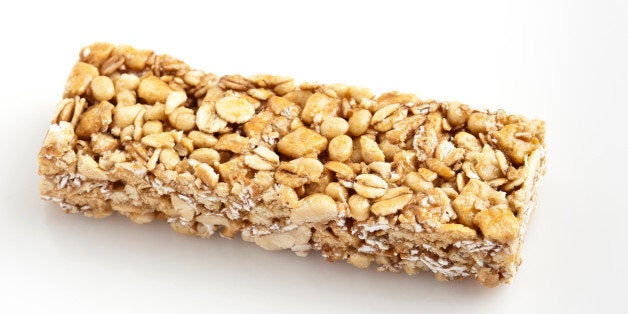
SPECIAL FROM Grandparents.com
Sugar is not your friend. The average American eats between 150 and 170 pounds of refined sugars a year, according to the The United States Department of Agriculture. That's over 5,000 tablespoons, or...the weight of an average person.
"Refined, or processed sugar, is stripped of all of its natural nutrients, leaving you with empty calories that make it easy to pack on extra weight," says nutrition and fitness expert Dr. Pamela Peeke, author of The New York Times Bestseller "The Hunger Fix." "When the weight is deposited deep in our bellies, a common occurrence after the age of 50, you increase the risk for heart disease and cancer." Refined sugar also increases insulin levels and contributes to insulin resistance which leads to diabetes, says Dr. Peeke. As if that isn't enough to put a hold on the sweet stuff, refined sugar can also cause your cells to age more quickly and lead to excessive inflammation, which increases your risk for many diseases.
You know to limit sweet treats, but watch out for these nine foods which appear to be healthy, but in truth, are loaded with refined sugars.
1. Granola cereals or bars.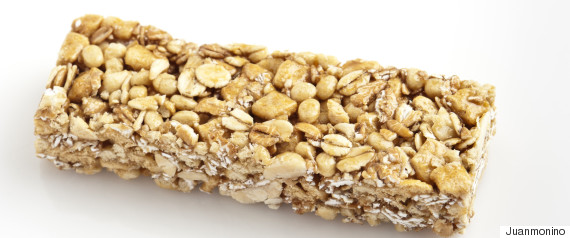
These might look super healthy, but granola-based cereals can have up to 15 grams of refined sugar in less than a cup. That's like eating three teaspoons of sugar. Granola bars can be even worse with up to 25 grams in a small bar, which is equal to the amount of sugar in a Hershey bar. "Granola bars are densely packed calories that are very difficult to portion control as the sweetness increases your appetite for more," says Dr. Peeke. "If you want satisfying crunch, reach for 12 almonds or walnuts."
2. Ketchup-based salad dressings
Hold the French, Russian, and Thousand Island next time your order a salad. "These ketchup-based dressings have 9-10 grams of sugar per two-tablespoon serving," says Dr. Peeke. That's more than four times the recommended allowance of about two grams per a two-tablespoon serving. If you think a fruity vinaigrette such as raspberry or pomegranate is a better choice, you'd be wrong. They have the same high amounts of sugar, says Dr. Peeke. Her suggestion: Make your own dressing using healthy ingredients (such as olive oil, garlic, and balsamic vinegar) and no refined sugar.
3. Yogurt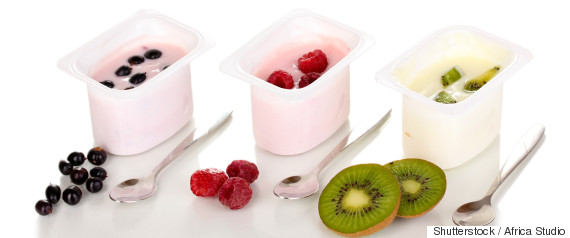
"All yogurts contain some sugar in the form of lactose (milk sugar), which is okay," says Dr. Peeke. "It’s the added sugar—often high fructose corn syrup—typical of 'fruit' yogurts that you need to watch out for, as they can have up to 30 grams (six teaspoons) or more of sugar per serving." A better choice: Grab plain Greek yogurt and add the herb stevia for sweetness, or swirl in 1/2 teaspoon of raw honey or maple syrup, which are both natural sources of sugar and "are fine in appropriate portions," says Dr. Peeke.
4. Frozen meals
Frozen entrees are filled with meat and vegetables, so how could they contain sugar, right? Wrong. "Frozen entrees commonly have 30-40 grams per serving of added sugars, and at least 500-600 milligrams of sodium.
"Refined sugar and excess salt both contribute to increased disease risk," says Dr. Peeke. "When refined sugar causes the rise in insulin, this results in the kidneys retaining sodium. As a consequence, you can experience a rise in blood pressure."
And consider this, says Dr. Peeke: "Americans' intake of sodium comes from four main sources: Seventy-five percent is in pre-packaged, processed, and restaurant food; 12 percent occurs naturally in food; 6 percent is added at the table; and 5 percent is added during home cooking. Clearly, the main culprit is processed food, which also contains the most sugar.
What to do: Read frozen entree labels carefully, and look out for hidden sugar in the added condiments and sauces.
5. Dried cranberries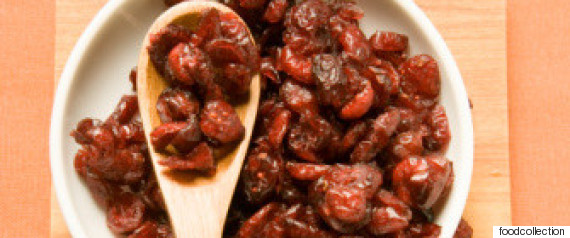
Just one-quarter of a cup—a single handful—can have as much as 29 grams of sugar (the amount of sugar as in a Snickers candy bar!) And it’s not all coming from the naturally sweet fruit. "A full cup of fresh cranberries has a just 4 grams of natural sugar," says Dr. Peeke. The rest of the sugar in cranberries comes from added sugars used as preservatives and for taste.
6. Fruit juice
You buy fruit juice thinking it's just squeezed fruit, but the truth is, fruit juices are often made from fruit concentrates, which aren't always good for you. Concentrates do contain fruit, but often in the concentration process the fruit flavor becomes bland, so sugar is added to make it sweet. Other fruit juices are really "fruit-flavored" drinks, which have very little fruit, if any, and are riddled with refined sugar, says Dr. Peeke. Fruit juices can have anywhere between 20-30 grams of sugar per cup. The best thing to do is read the label first and look for "100% juice unsweetened" which has no added sugar.
7. BBQ and other sauces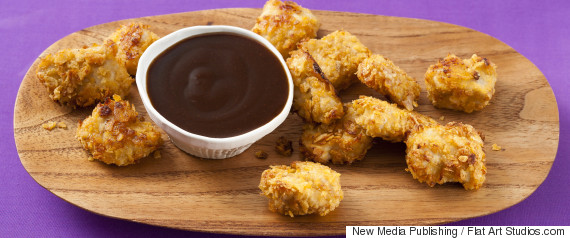
Adding sauces like barbecue, teriyaki, and jerk to grilled meats can add mega flavor with minimal fat, but in some products, sugars can account for a whopping 80 percent of the calories. A skimpy two tablespoon serving of barbecue sauce can have 12 grams of sugar. That's like eating almost three teaspoons-worth of sugar. Instead, make your own sauce and cut the sugar. If you're eating out, ask for the sauce to the side so you can control the amount.
8. White wine
If you love to have a glass of wine or two with dinner, choose your wine carefully. The amount of sugar in white wine typically depends on the kind of wine you're drinking. Dryer wines tend to have less sugar—around 1.5 grams per glass, while sweet wines, like Rieslings, can have 6 grams per glass. Drink two glasses, and that's 12 grams of sugar! Another option: stick to red wines, since they tend to have less sugar overall.
9. Canned fruit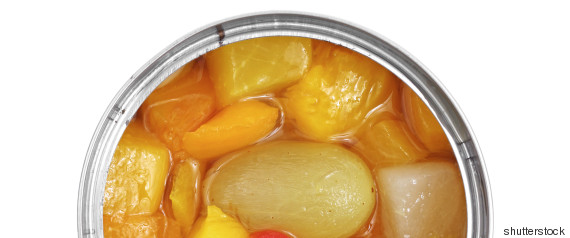
Canned fruit is often packed in sugary syrup, which is really calorie-laden high fructose corn syrup. One cup of canned fruit can have 30 grams or more of sugar. That's the equivalent of seven Oreo cookies. If you're going to buy canned fruit, look for brands that are packed in water or natural juice, says Dr. Peeke. Better still, forget the can and grab a real piece of fruit. Fruit does have natural sugar, but it also has fiber, which not only increases our sense of satisfaction and fullness, but is also good for digestion, says Dr. Peeke. "When you're eating fruit, it’s important to eat a variety of colors in fruits as the deeper the color the higher the level of antioxidants and nutrients," she says.
Read more from Grandparents.com:The 8 biggest excuses that kill your workout motivation7 immediate benefits of exerciseThe 3-minute workout you can do anywhere
